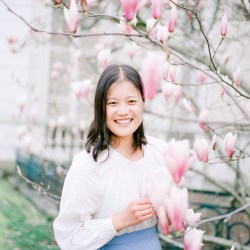From the butterfly to the wolf cut, it seems that a new hairstyle (and appropriately creative name) pops up every time fashion week blows through. The 2024 fall/winter New York Fashion Week was no exception, and it appears the internet is going crazy for the “baroque bob” haircut. (According to Google Trends, the style is a top beauty search term.) This is all thanks to British designer Christian Cowan, who sent his models down the catwalk with the grandiloquent bob that is now one of the must-try looks of the season. We sat down with two hairstylists to talk about everything you need to know concerning the baroque bob haircut—including at-home styling tips. Before you know it, you’ll be ready to swoop through the hallways of Versailles.
The Ornate ‘Baroque Bob’ Haircut Is Our Newest NYFW Obsession
volume, volume, volume
PureWow editors select every item that appears on this page, and the company may earn compensation through affiliate links within the story. All prices are accurate upon date of publish. You can learn more about the affiliate process here.
Meet the Experts
- Chaz Dean is a celebrity hairstylist, colorist and the founder of WEN hair and body care line. Dean has over 25 years of experience, and his salon has served the likes of Ming-Na Wen, Nicole Murphy, Gilles Marini, Alyssa Milano, Gwyneth Paltrow and others. WEN is also the winner of multiple QVC Beauty Awards.
- Fabio Scalia is the owner of Fabio Scalia Salons in New York City, which has salons in Soho and Brooklyn Heights. Scalia has been working in the industry since he was 12 and is an expert in hair growth and trichology. He has trained at multiple academies, including Aldo Coppola, Vidal Sassoon and TONI&GUY, in addition to working in top salons from Milan to Monte Carlo.
Want more beauty tips sent right to your inbox? Subscribe here.
What Is the Baroque Bob Haircut?
As seen in Christian Cowan’s fall/winter ‘24 presentation at New York Fashion Week, the haircut features sky-high volume and voluptuous waves. Fitting, as the name nods to the Baroque art period, which lasted loosely from 1600 to 1750. (This covered, in whole or part, the reigns of Louis XIV and IV.) The art during this time was all about “self-confidence and dynamism,” according to TATE, and Britannica notes that “Some of the qualities most frequently associated with the Baroque are grandeur, sensuous richness, drama, vitality, movement, tension, emotional exuberance, and a tendency to blur distinctions between the various arts.” In art criticism, the term describes iconoclasts, and the baroque bob haircut fits the bill. The style is unapologetically ostentatious and commands attention.
“In the Baroque period, hairdressing was very beautiful, elaborate and with extravagant details,” Scalia notes. “[The styles had] strong attention to detail and fundamentals of a classic coiffeur. It was a woman’s biggest accessory. In terms of why it’s popular now, I think hairdressers are going back to showing a sense of beauty and volume to counteract the more toned-down and slicked back styles prevalent in recent seasons.”
Despite its lofty appearance, the cut is deceivingly simple. “The Baroque Bob is a below-the-chin length bob, sitting just above the shoulders,” Dean explains. “It’s typically a blunt cut, which adds some weight and density. [The bob is] always styled with a subtle wavy curl, prominently around the face.”
Who Is the Baroque Bob Best For?
Both Scalia and Dean say that most people can rock the baroque bob haircut—though the former says that those who have very round faces or shorter necks may want to opt for a different style. According to Dean, the cut is easy to style but still elegant.
How to Style the Baroque Bob at Home
The Baroque bob is all about volume, so depending on your hair type, you may need more volumizing products. (Hello, fine-haired people.) Dean starts by prepping wet strands with styling cream and mousse from mid-shaft to ends. Then, dry your hair until it’s about 75 percent dry, before using a round brush to twirl out curls. For maximum volume, Scalia says it’s best to work in sections and pin your hair up as you go.
“The longer [your hair] sits, the more movement you can achieve [with it],” he says. Determining how long to keep your hair pinned up will depend on the texture of your hair and how well it holds shape. “What you want to do is lift your [hair] off the shoulders, [gathering the hair off the nape of the neck] and rolling it upwards. [Alternate] rolling a few sections down from top to bottom to create more movement [at] the bottom of the style.” Finish with hair spray (Scalia recommends Oribe’s Très Set Structure Spray) throughout your strands for hold, and a little smoothing cream for polish.




